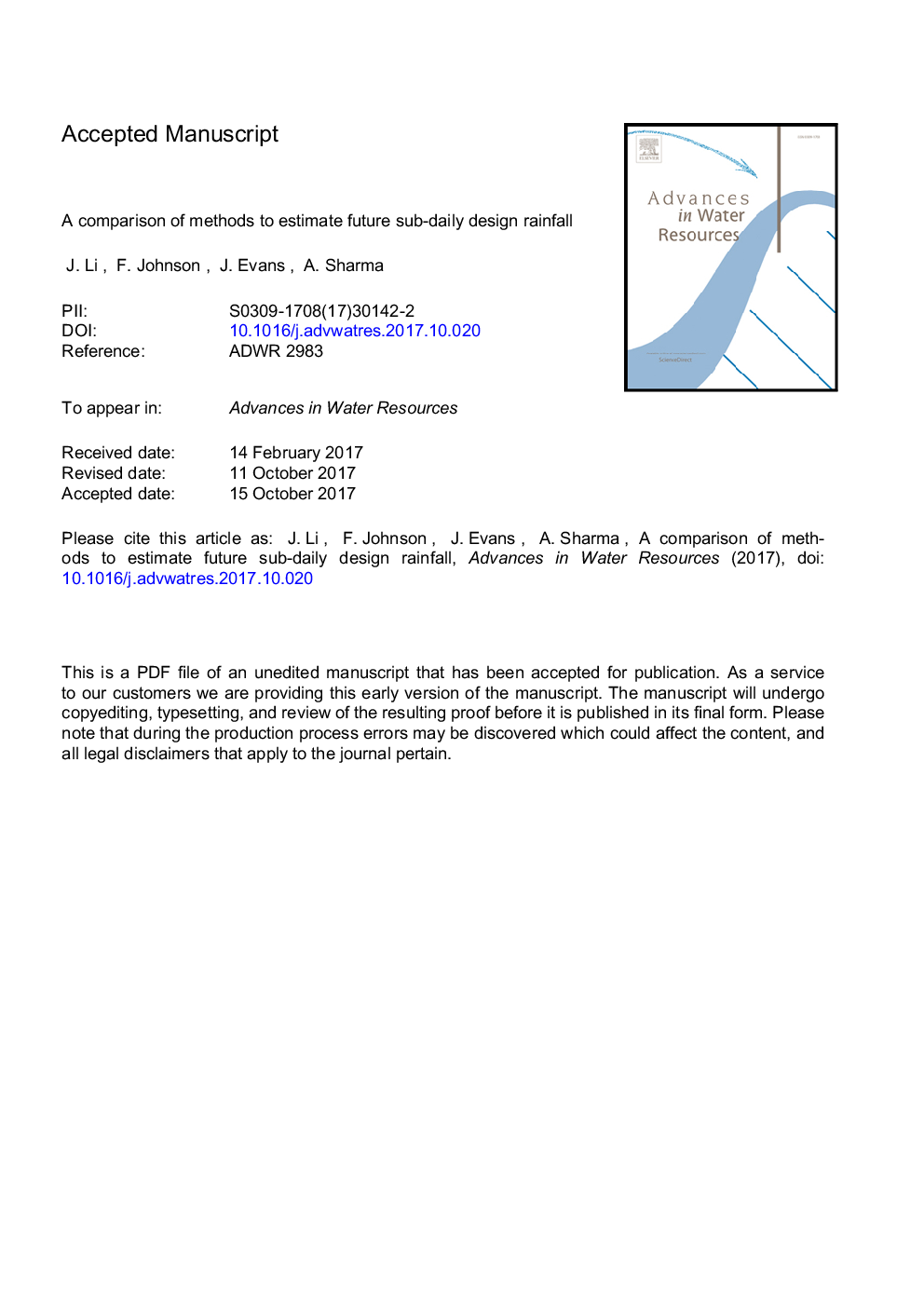| Article ID | Journal | Published Year | Pages | File Type |
|---|---|---|---|---|
| 8883447 | Advances in Water Resources | 2017 | 38 Pages |
Abstract
Warmer temperatures are expected to increase extreme short-duration rainfall due to the increased moisture-holding capacity of the atmosphere. While attention has been paid to the impacts of climate change on future design rainfalls at daily or longer time scales, the potential changes in short duration design rainfalls have been often overlooked due to the limited availability of sub-daily projections and observations. This study uses a high-resolution regional climate model (RCM) to predict the changes in sub-daily design rainfalls for the Greater Sydney region in Australia. Sixteen methods for predicting changes to sub-daily future extremes are assessed based on different options for bias correction, disaggregation and frequency analysis. A Monte Carlo cross-validation procedure is employed to evaluate the skill of each method in estimating the design rainfall for the current climate. It is found that bias correction significantly improves the accuracy of the design rainfall estimated for the current climate. For 1â¯h events, bias correcting the hourly annual maximum rainfall simulated by the RCM produces design rainfall closest to observations, whereas for multi-hour events, disaggregating the daily rainfall total is recommended. This suggests that the RCM fails to simulate the observed multi-duration rainfall persistence, which is a common issue for most climate models. Despite the significant differences in the estimated design rainfalls between different methods, all methods lead to an increase in design rainfalls across the majority of the study region.
Keywords
Related Topics
Physical Sciences and Engineering
Earth and Planetary Sciences
Earth-Surface Processes
Authors
J. Li, F. Johnson, J. Evans, A. Sharma,
